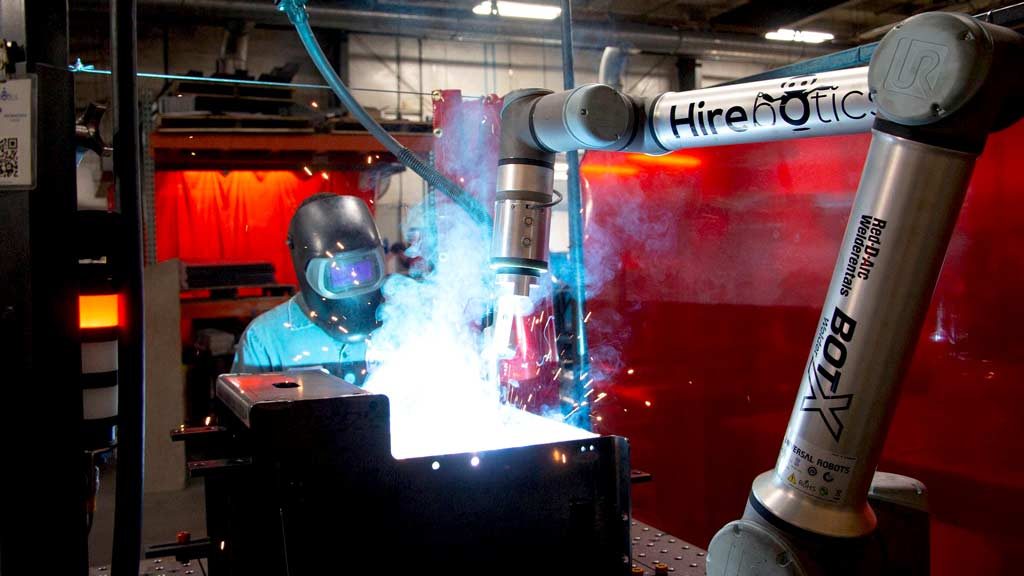Facing a shortage of skilled welders, construction metal fabricators may have considered automating some of their production. But it’s a challenging undertaking, particularly for smaller companies, to contend with large capital outlays, programming robots and training staff to oversee the automated machines.
Hirebotics is aiming to change those dynamics by supplying its BotX MIG welding robots, then charging an hourly wage for businesses to keep them. Current pay rate? $33 USD per hour.
There’s no up-front capital cost charged to the business. However, a robot’s employment contract requires that it be occupied for a minimum of 40 productive hours per week. Overtime is billed at the same hourly rate.
The Nashville, Tenn. company launched in 2016 with a mission to employ robots in a range of manufacturing businesses at predictable hourly wages.
“Welding is just another robotic service we’ve added to our list of robotic tasks,” says Rob Goldiez, co-founder of Hirebotics.
“The typical customer is already performing welding work. They’re struggling to find skilled workers and they see this solution as a way to solve that labour shortage. Knowing they can count on a Hirebotics robot means they can maintain production, meet deadlines, expand production as needed and bid more aggressively on contracts.”
After customers sign an employment agreement with their robot, it typically takes about two weeks for the new employee to arrive. The bots sit on a four-by-four-foot welding table and its welding arm has a 51-inch reach.
Employers are encouraged to give each bot its own name.
Hirebotics staff members provide initial training to help customers learn how to use the welder. Support is also available around the clock.
A simplified programming system allows workers to instruct new robot hires to complete their assigned welding tasks.
“The Hirebotics mobile app is designed for a non-robotics person to create a routine for BotX,” says Goldiez.
“You start a welding routine by describing the part, describing the material you’re welding and the category of weld you want to complete. You then move the robot arm along the pathway you want to weld, stopping at each weld stop, and then save that path to the app.”
The app accesses a cloud-based welding library that may suggest improvements to the welding routine to achieve an optimal weld.
While BotX can perform routine welds more quickly than a skilled welder, Goldiez notes that the greatest productivity increases involve freeing up skilled human welders to work on more challenging tasks, while non-welder operators tend to the bots.
BotX currently specializes in steel and stainless steel, but Hirebotics is working to add aluminum to the materials it can weld.
During the welding robot’s soft launch, Hirebotics has already placed units at several locations around the U.S. They’ll officially launch on November 1 at FABTECH, a metal manufacturing show held in Chicago.
Goldiez says Hirebotics is currently working with a partner to extend the company’s service area to Canada. The robot’s Canadian wages have yet to be established.
“Hirebotics has never been about replacing workers or causing them to lose their jobs,” says Goldiez.
“It’s about helping companies cope with a shortage of skilled workers. If you buy an expensive welding robot and business slows down, you’ll likely have to keep the robot and let employees go. If you hire a Hirebotics welder and you’re about to finish a big job or your work is seasonal, just give your robot 30 days’ notice to end the contract. Keep your highly trained and valued employees employed — lay off your robot instead.”



Recent Comments